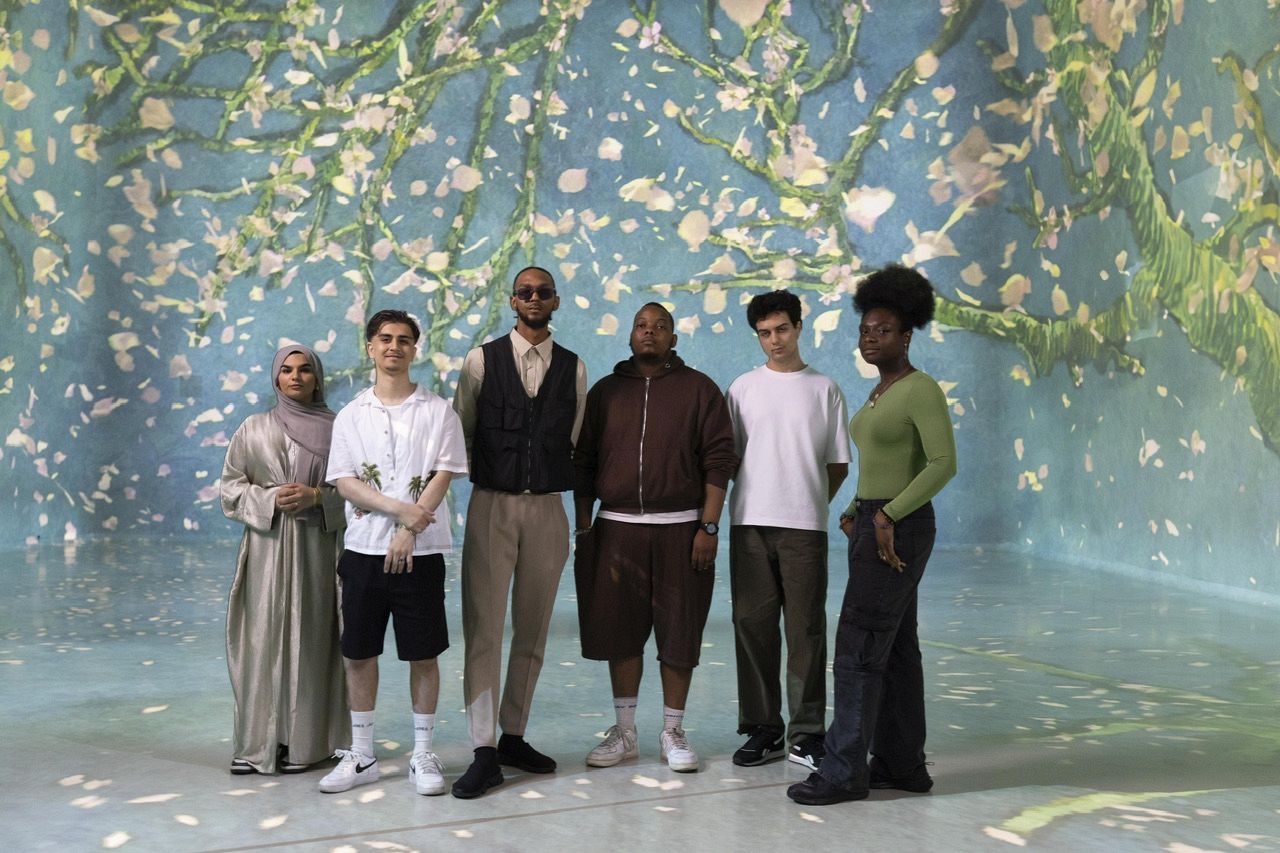“I think expressing yourself creatively is like opening a window in a crowded room,” George the Poet told Euronews Culture. “It’s part of the cleansing process. It’s a way of letting go. A way of just confronting things that you might not even want to say out loud.”
That energy was exactly what filled the shimmering LED walls of FRAMELESS, the UK’s largest immersive art space, for a special event celebrating the words of young Londoners.
In a collaboration between FRAMELESS, the Mayor of London’s Violence Reduction Unit, and spoken word artist and podcast host George the Poet, the Art of Expression initiative invited a group of 13–25-year-olds to reimagine famous artworks through original spoken word pieces.
Their work – poetry rooted in their lived experiences – was presented not just alongside the art, but within it: an immersive, multi-sensory reframe of Rembrandt’s The Storm on the Sea of Galilee, Edvard Munch’s The Scream, Hieronymus Bosch’s The Garden of Earthly Delights, and more.
Making art more accessible for young people
The project comes off the back of new research which uncovered a growing cultural divide: 48% of young people don’t feel historical art is relevant to their lives, while a quarter find traditional galleries “posh and intimidating.”
Yet, despite this disconnect, the appetite is there – 61% of young people say they wish they had more opportunities to engage with art, and 64% believe that learning to interpret or create art would improve other areas of their lives.
“I always imagined a space where we can do immersive artwork,” explained George the Poet, recalling how he has previously utilised audio immersion through his award-winning podcast, “Have You Heard George’s Podcast?”.
“But the visual immersive was always the missing piece. Frameless reached out… connecting young people, classic pieces, contemporary pieces, and poetry. I said, yeah – you’ve come to the right person.”
George led workshops with the Young People’s Action Group from the VRU, using art as a mirror to reflect back the challenges, hopes, and complexity of youth in modern London.
“I personally believe that everything we drew out was already within them,” he said. “They had the appreciation of art, of poetry, of how these things connect to contemporary society. It’s been beautiful to watch it blossom.”
He added: “If you recognise that we all have that creative instinct, that artistic impulse, and you invite a young person to bring that to the table – they will become receptive to anything you want to introduce them to,” he said. “I’ve never seen it fail.”
One young writer turned “The Great Wave off Kanagawa” into a metaphor for migration and family displacement. Another took on “The Scream”, framing it as a cry against systemic injustice. And George himself reimagined John Atkinson Grimshaw painting “Reflections on the Thames”, all through the lens of 21st-century urban life.
George believes that this kind of expression can leave a lasting imprint not just on the individual, but on society: “When we come together and share our reflections, that becomes like a map of society,” he said. “And in this era of AI, of online wars, of populism – it’s very important that we’re making our voices heard. Our authentic voices.”
But the barriers to entry in the creative industry remain high, especially for those from working-class or marginalised backgrounds. For George the Poet, the solution lies in real, long-term investment.
“We need more public support, more state support,” he told Euronews Culture. “It’s very important to proactively meet our young people in their communities with a real, intention to usher them into the industry.”
The spoken word pieces can be heard here on the Frameless website, and are also available to listen to in the gallery space this summer by scanning a QR code.






